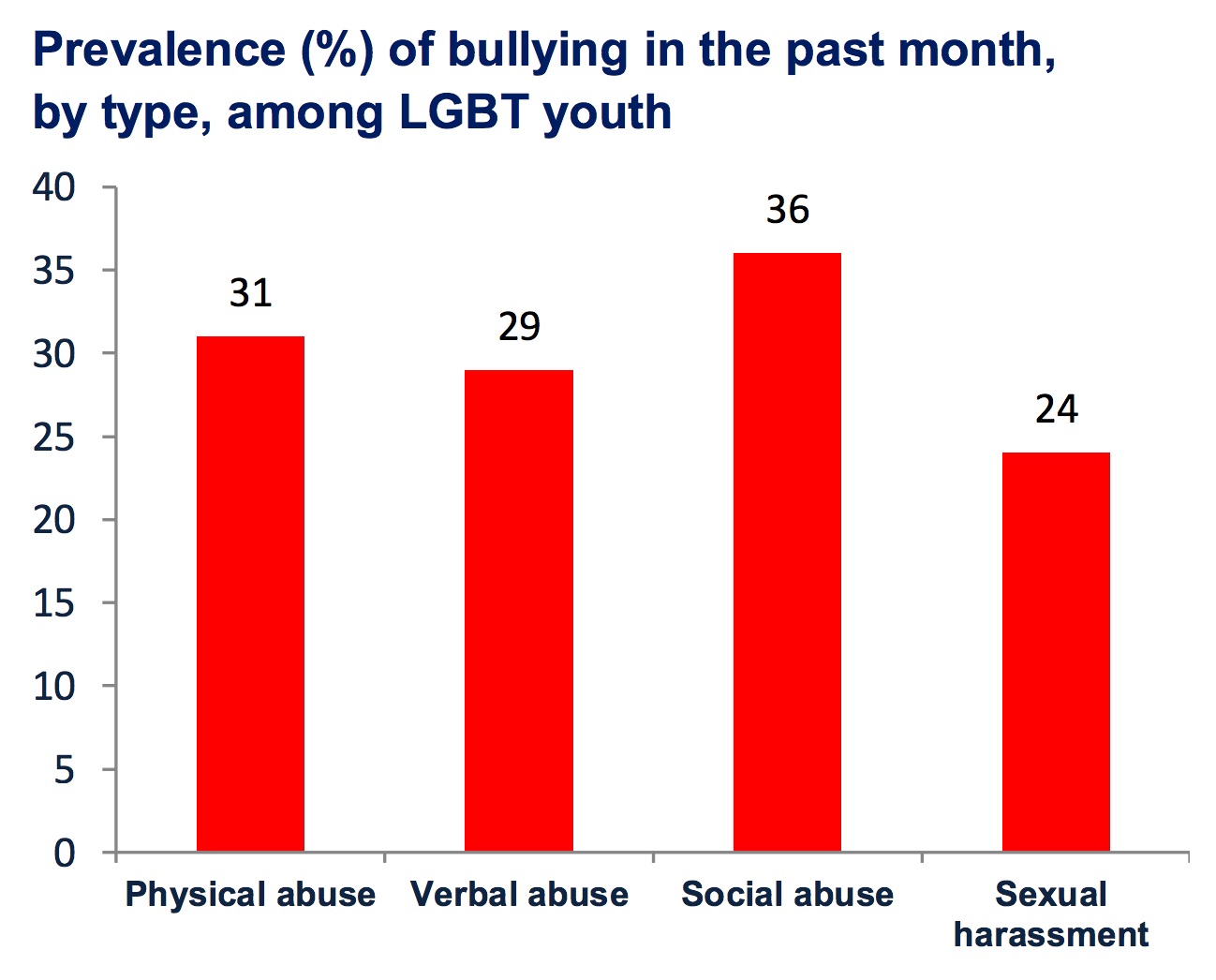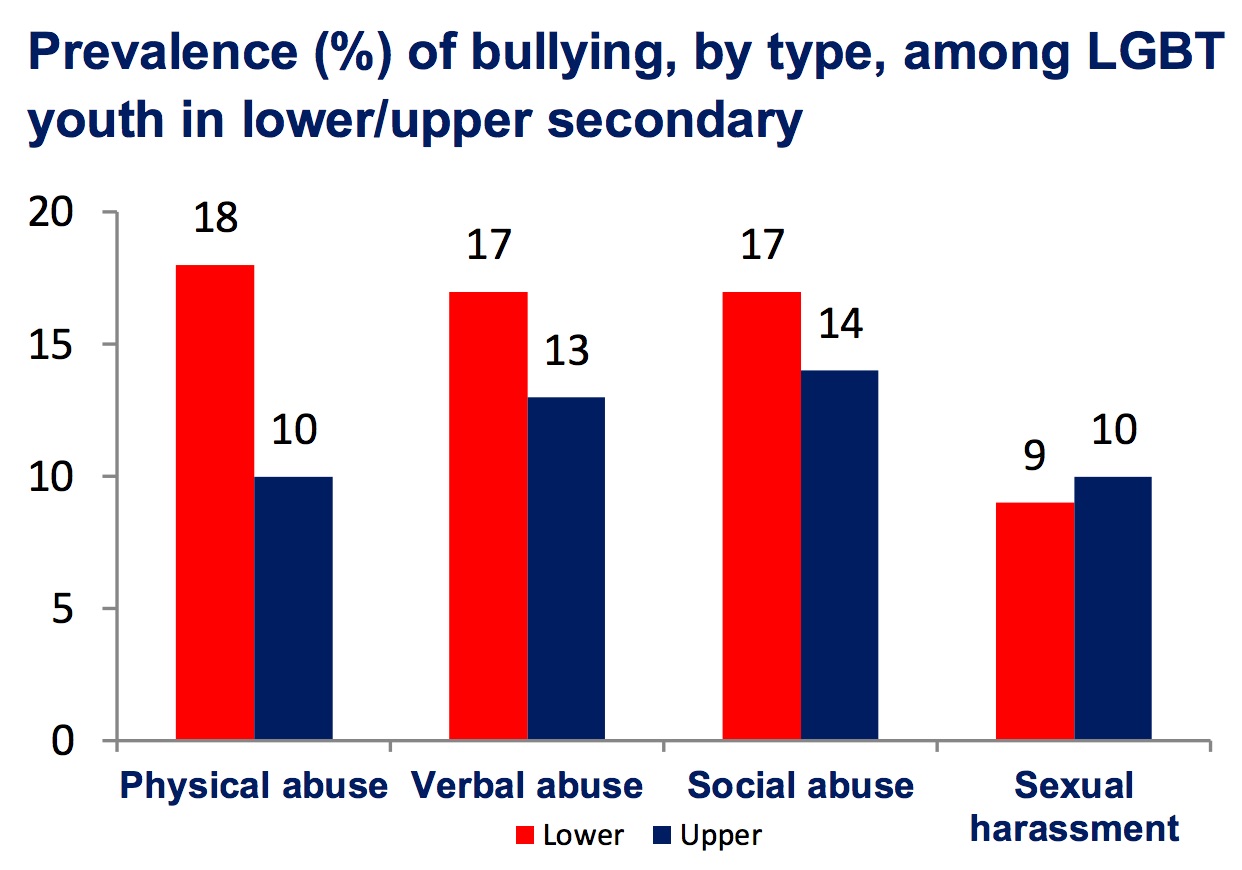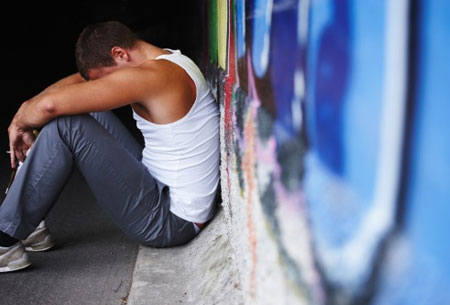In 1996, World Health Organization (WHO) announced that youth violence constitutes a major public health problem in many parts of the world which needs to be prevented and resolved urgently. Bullying is a form of violence which is growing in a wider area. A study of 40 countries in 2008 suggested that the prevalence of bullying ranged from 8.6-45.2% in boys and from 4.8-35.8% in girls, especially among students 11-15 of age. Highest number of bullying was reported in this age group of secondary school.
A study regarding school bullying on the basis of sexual orientation and gender identity in 2013 by United Nations Educational, Scientific and Cultural Organization (UNESCO) and Plan International Thailand found that self-identified LGBT or students with sexual diversity in lower and upper-secondary school were often victimized in school bullying.
Meanwhile, the understanding of bullying among students depended on intent of witness and relationship of those involved (enemy or friend) as they explained it as ‘verbal teasing’ or ‘playing within the group’. Meanwhile, teacher tended to only associate bullying with physical fight.
Bullied as perceived to be LGBT
More than half or 56% of self-identified LGBT students said the reason for bullying was their sexual orientation and gender identity while 25% of students who did not identify as LGBT reported being bullied because they were perceived to be transgender or homosexual. These figures are relevant to a study conducted by Office of the High Commission on Human Rights (OHCHR), which said perception of homosexual or intersex individual is the cause of bullying victimization and the bullying ranges from verbal abuse (e.g., face-to-face and online name-calling), physical abuse (e.g., slapping, kicking), social abuse (e.g., face-to-face and online social exclusion), and sexual harassment (e.g., unwanted touching).

Moreover, another form of bullying gay or transgender students was the mimicking rape or placed into intercourse positions for humiliation. While lesbian or tom[1] female students were the least favored group. Some schools had anti-tom group and been often teased by male students near toilet. Some did not even use toilet for the whole day. However, verbal bullying was more common among lower-secondary students than higher-secondary students but there was no significant difference between both levels of students.

Not only physical violence, but policies or school regulations also seemed to constitute a structural violence. For example, a transgender student noted that strict regulations regarding uniform and hairstyle based on sex at birth making them feel uncomfortable and forced them to follow the norms of the opposite sex. However, many schools found these problems trivial despite the fact that it was directly linked to bullying behaviors. For example, forcing tom students to wear short bob hair made them seem ridiculous in the eyes of other students and those who often targeted to tease or bully them.
Student bystanders did noting – some joined
Reaction of bystanders who witnessed teasing or bullying LGBT students varied and depended on
intensity of the incidents and relationship with the victim. The reactions included doing nothing (because they think they are just playing with friends), joining the bullying, trying to get the bully to stop and informing teacher or school staff (if the incident is severe).
Around two-thirds or 68% of victims of anti-LGBT bullying said they did not report these incidents or even talked about it with anyone. Nearly a quarter or 23% of those who did nothing said ‘nothing would happen even if someone were told’.
These are what the victims told about the bullying.
“Some don’t care, some try to stop it if it’s their close friend. If they’re not close friends, they would not get involved.”
“Sometimes they even take pictures…they post the pictures on Facebook…they’ll tag the pictures, on and on, within the class.”
“I want to take revenge but we can’t fight against them. They are stronger.”
Concerning impacts on the victims, nearly one-quarter or 23% of those bullied were depressed. Nearly one-third or 31% reported absent from school in the past month while nearly 7% having attempted suicide in the past year.
Keep silent when bullied as teachers did not care – school has no preventive measure.
The research findings suggest that most schools did not have preventive measure to manage bullying and none had anti-LGBT bullying preventive measure. Furthermore, school directors and teachers did not believe this was necessary as they understood bullying to refer primilarily to physical acts of violence (e.g., punching) and most teachers did not see LGBT students as victims of bullying because most bullying against LGBT were not reported to them.
Nevertheless, many schools had guidance counsellors who could provide support to individual bullied victim, yet they were rarely supported. Victims said that when informed about being bullied, they were told that it was their own fault.
School recommended to create safe spaces, not to discriminate
This study also suggested schools to develop clear anti-bullying policies covering students of all genders, to enforce clear mechanisms for addressing perpetrators and not to discriminate on the basis of sex or sexual orientation. Moreover, it was suggested to create safe spaces for LGBT students in schools. Recomendations for policy makers were to establish policies enabling school regulations with greater flexibility on schools uniforms and hairstyles and to monitor the implementation of these policies.
Additionally, students, teachers and parents were suggested to challenge prevailing myths about LGBT students that they are sexually deviant, mentally abnormal, over-emotional or prone to violate school regulations.
[1] In Thai translation, tom (ทอม) means butch (masculine) same-sex attracted female.
http://unesdoc.unesco.org/images/0022/002275/227518e.pdf
Go to 'จับตา' for “คำศัพท์เกี่ยวกับวิถีทางเพศและอัตลักษณ์ทางเพศที่หลากหลาย”
http://www.tcijthai.com/tcijthainews/view.php?ids=5711
www.facebook.com/tcijthai
Tags






